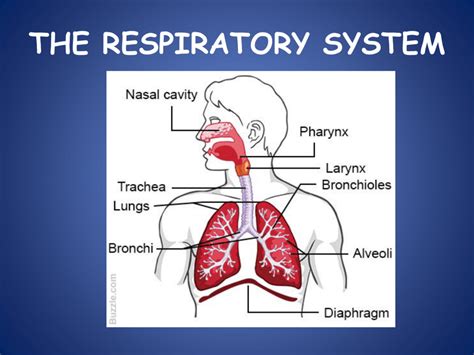Respiratory Function - Key Concepts & Health Implications
Respiratory Function FAQ
What body systems work with the respiratory system?
Other body systems that work with the respiratory system include the nervous system, lymphatic system , and immune system. The image shows an enlarged view of the airways and lungs, as well as the trachea; bronchial tubes, or bronchi; and bronchioles.
How does the circulatory system support the respiratory system?
The circulatory system, which is made up of the heart and blood vessels, supports the respiratory system by bringing blood to and from the lungs. The circulatory system helps deliver nutrients and oxygen from the lungs to tissues and organs throughout the body. It also helps remove carbon dioxide and waste products.
What is the anatomy of the respiratory system?
In humans and most mammals, the anatomy of the respiratory system is The first is the series of conducting tubes that carry air from the atmosphere towards the lungs. The second part consists of the muscles of respiration – the diaphragm and in the ribs. The lungs form the third part.
What are the major organs of the respiratory system?
The major organs of the respiratory system include the nose, pharynx, larynx, trachea, bronchi, lungs, and diaphragm. Learn about the anatomy and function of the respiratory system in this article.
Respiratory Function References
If you want to know more about Respiratory Function, consider exploring links below:
What Is Respiratory Function
- https://my.clevelandclinic.org/health/body/21205-respiratory-system
- https://biologydictionary.net/respiratory-system/
- https://www.britannica.com/science/respiratory-system
- https://www.kenhub.com/en/library/anatomy/the-respiratory-system
- https://www.verywellhealth.com/lung-function-5235477
- https://www.medicalnewstoday.com/articles/respiratory-system
- https://www.webmd.com/lung/how-we-breathe
- https://www.healthline.com/human-body-maps/respiratory-system
- https://www.nhlbi.nih.gov/health/lungs/respiratory-system
Respiratory Function Information
Explore Related Topics
Music Therapy: A Novel Approach to Diabetes Stress Management?
Uncover the potential of music therapy as a unique stress reduction technique for individuals with diabetes
